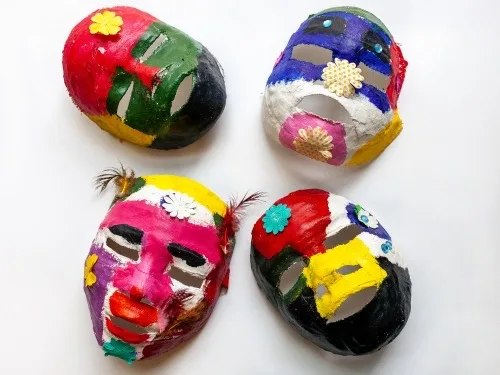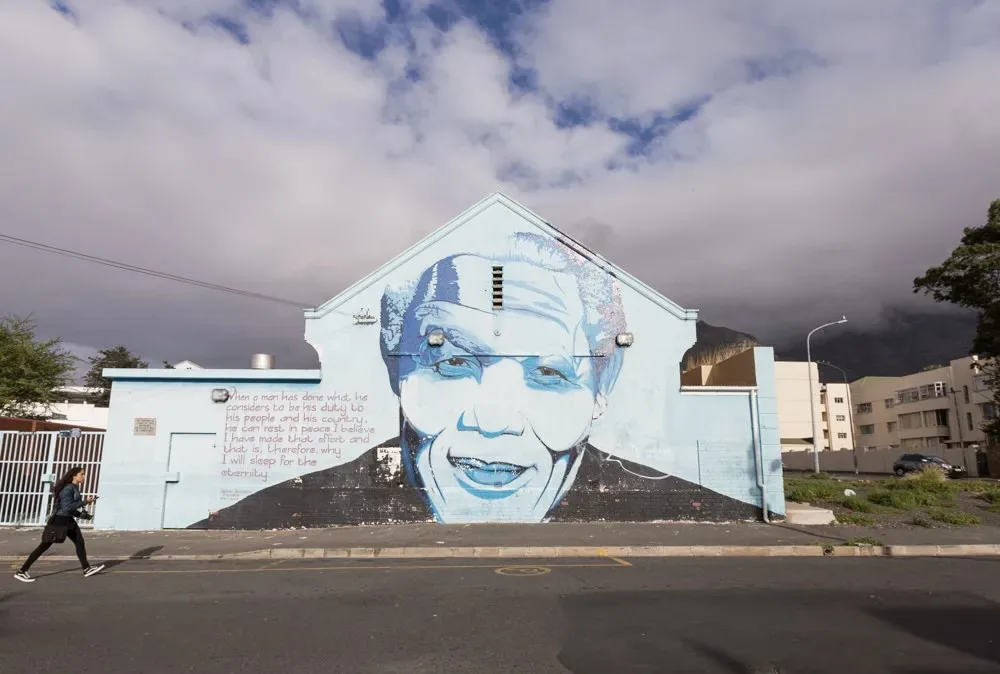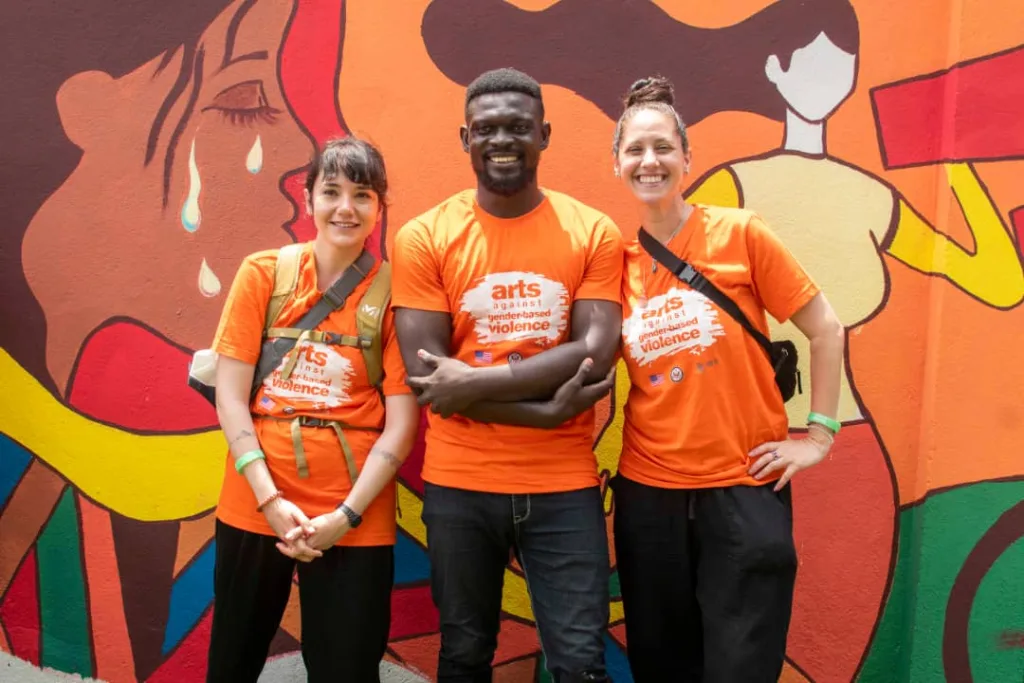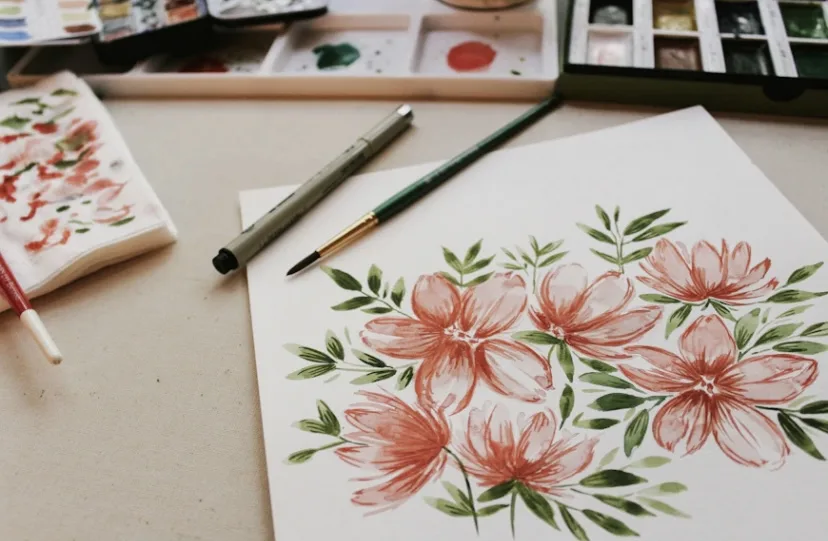Art has long been a medium of expression, but it transcends mere creativity, serving as a powerful tool for healing trauma. In a continent where communities have faced profound challenges—ranging from the scars of colonialism to the impacts of conflict—African art provides a pathway from wounds to wellness.
In addition to transforming trauma, this journey seeks to transmute it into a restorative source of renewal and hope.


Healing Trauma Through Art in Uganda
Amidst conflict and displacement, art has proven to be a potent force for healing and unity in the Nakivale Refugee Settlement, Uganda. For refugees like Riziki Musali and Sheria Bisimwa, art serves as a lifeline, helping them transform their trauma into resilience and hope. Musali’s art fosters peace and connection, while Bisimwa’s creations depict the journey from darkness to light, highlighting art’s ability to heal.
A mask-making project led by Myriam Denov and Watye Ki Gen (WE HAVE HOPE) in northern Uganda further illustrates this power.
Involving 79 children born into captivity in the Lord’s Resistance Army (LRA), the project provided a safe space for these young survivors to process their traumatic experiences and begin healing.
The masks they created, infused with vivid colors representing their memories, underscore the therapeutic potential of art in helping individuals reclaim their identities.
Ultimately, this reinforces the idea that art is a pathway to healing trauma in Africa, and demonstrates the profound impact that creative expression can have on individuals and communities recovering from the horrors of war.
By engaging in art, these child-survivors not only find a voice but also reclaim their identities, opening doors to a future of healing and hope.
This approach, deeply rooted in cultural and personal expression, offers a powerful model for other regions grappling with the aftermath of conflict, emphasizing that art is not just a reflection of experience but a vital tool in the journey towards recovery and renewal.

Healing Trauma with the District Six Mural Project in Cape Town
In South Africa, mural art has been a powerful tool for collective healing, especially in communities affected by apartheid. A notable case is the District Six Mural Project in Cape Town which engaged former residents of District Six, a community forcibly removed during apartheid, to create murals depicting collective history and memories.
Through this process, individuals can externalize their shared trauma, fostering collective bonds and strengthening their sense of community as they envision a hopeful future together.

Healing the Trauma of Gender-Based Violence
In the ongoing struggle against gender-based violence (GBV), art has emerged as a vital tool for healing and empowerment. By providing a non-verbal outlet for expression, art allows survivors to process and communicate their experiences in ways that words often cannot. This approach not only helps in addressing trauma but also fosters resilience, encouraging survivors to reclaim their identities and rebuild their lives.
In Calabar, Nigeria, a groundbreaking initiative, Arts Against Gender-based Violence, recently demonstrated the healing power of art in addressing gender-based violence (GBV). Held from July 12-16, 2022, this program, facilitated by the Mandela Washington Fellowship, gathered GBV survivors, advocates, and community leaders.
During the program, participants engaged in various artistic modalities, including expressive dance and art therapy, which provided them with valuable tools to express their emotions and build resilience. This focus on artistic expression not only promoted personal healing but also equipped GBV survivors with essential coping strategies.
Furthermore, a central aspect of the project was the emphasis on self-care for those working with GBV survivors. By fostering self-awareness and emotional resilience, the training helped the guides enhance their well-being as they provide support for victims.
Among the project’s most impactful outcomes was the creation of the Zero Tolerance Mural for GBV. This mural, located at the Mary Slessor Avenue near the University of Calabar, serves as a powerful public statement against GBV and a symbol of hope for the community.
In reflecting on the project, Timothy Undiandeye, a 2019 Mandela Washington Fellow and host of the initiative, underscored the arts’ ability to dismantle barriers and foster crucial conversations. By leveraging the therapeutic potential of art, this initiative is paving the way for more effective strategies in addressing the complex issue of gender-based violence.

Art stands as a powerful conduit for healing across Africa, where its influence reaches deep into the hearts of those grappling with trauma.
From the murals that breathe life into Cape Town’s history, to the transformative art therapy sessions in Calabar, and the poignant expressions of resilience in Uganda, art offers a unique, non-verbal means to confront and transcend suffering.
Through creative expression, survivors reclaim their voices, rebuild fractured identities, and foster a sense of hope that radiates throughout their communities. This journey, from pain to empowerment, highlights art’s unparalleled role in not only healing individual wounds but also in shaping a collective future brimming with resilience and renewed strength.


